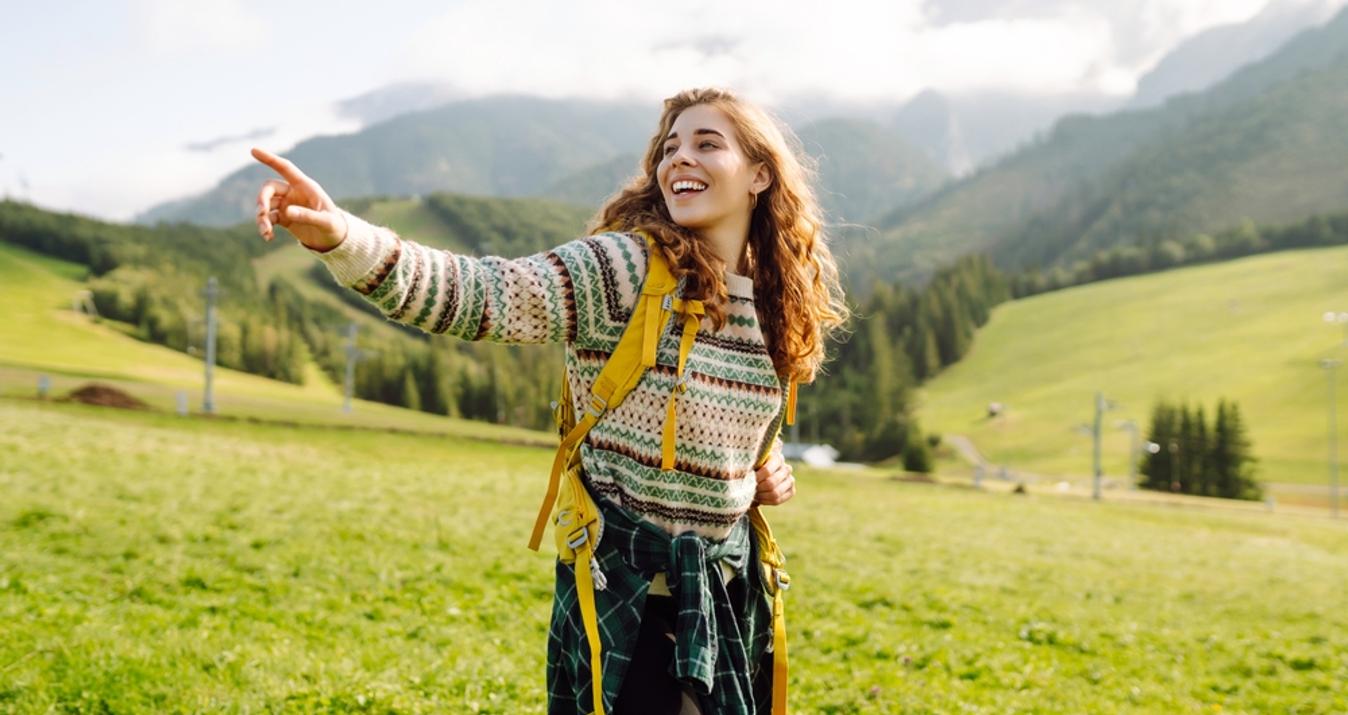Surreal Photography Ideas & Techniques
December 08, 2022

Surrealism, visual poetry, and a touch of irony. Through the artist's lens, ordinary objects change their purpose and begin a new life. Would you like to join this great art and create your own masterpieces of photography?
In our short tutorial, we will try to immerse the reader in the world of surrealistic photography, tell about the history of this phenomenon and give useful tips for beginner photographers in this genre. As a bonus, we'll introduce you to Luminar Neo, a dedicated image color editor that will breathe new life into your photos by adding unique moods.
What is Surreal Photography & Surrealism?
 Surrealism photography, like a surrealist painting, is filled with a strange assemblage of objects. It offers the viewer a journey into the unconscious and irrational. In these works the authors turn away from reality, turning to their fantasies and dreams, drawing from their symbols and translating them into artistic images.
Surrealism photography, like a surrealist painting, is filled with a strange assemblage of objects. It offers the viewer a journey into the unconscious and irrational. In these works the authors turn away from reality, turning to their fantasies and dreams, drawing from their symbols and translating them into artistic images.
Let's go back to history
Surreal photography (from the French "superreality"), as an objective art, had to find its own means of depicting surreality. Such techniques include the technique of multiple exposures (such as darkroom techniques to create pictures) and a method based on obtaining an image as a result of the successive shooting of several objects on the same section of the film by repeatedly exposing the entire frame. One image is superimposed on another, resulting in a frame consisting of several mutually translucent images) and photomontage.
The master of staged surrealist photography, Philippe Halsman, published a book, Dali's Mustache, dedicated to the famous surrealist Dali. The artistic execution of the photographs matched the subject matter: in one portrait, next to the artist, a combination of the bodies of seven naked sitters, shaped like a human skull. In another, a close-up of Dali's face in a clock form with a mustache acting as hands. The Dali Atomicus portrait was based on notions of the composition of the atom, in which negatively charged electrons move around a positively charged nucleus in airless space. To show this artistic motion, Dali jumped up, assistants tossed cats and furniture into the air, and one poured water from a bucket. Halsman shot this scene with strong pavilion flashes so that the whole artificially created situation was depicted absolutely sharply.
The idea of the Dali Atomicus shot was successful, and in 1959 Hulsman published Jump Book, a book made up of portraits of celebrities photographed at the moment of the jump. The bizarre idea of jumping Hulsman explained by the fact that at the moment of jumping people are liberated and it becomes possible to capture their undisguised essence, "to see their true face.
The British photographer Angus McBean was also famous for his surrealistic portraits. McBean used multiple exposures and photomontage to combine a portrait and a surreal landscape in one photograph (such as surrealism in portrait photography called "Portrait of the Film Actress Audrey Hepburn"). McBean shot extensively for the theater, and his ghostly, layered images of scenes from productions became the calling card for many productions.
In the 1950s and 60s, the famous Czech photographer Josef Sudek turned to surrealism. In his series Magic Garden, Sudek created surrealistic images resulting from the arbitrary combination of various objects. It`s one of the best surrealism in photography examples. In one of the photographs in the "Magic Garden" series, you can see an antique statue and a stone ball in the foreground. The tree behind them is bent so low to the ground that its branches form a tent hiding the statue and the orb. It is no coincidence that the photographer has placed the statue in the narrow space under the "tent" - it seems disproportionately large in that space. This disproportionality creates a feeling of a strange, unreal space. All of this is somewhat reminiscent of the paintings of proto-Surrealist Giorgio de Chirico with his symbolic metaphysics, frozen and frightening spaces, antique statues, and mannequins.
Another photograph in this series shows a curved tree trunk in the foreground, its bizarre shape reminiscent of some kind of monster, a feeling reinforced by the glass eye attached to the top of the trunk. The dark silhouette of the "monster" is contrasted with the luminous figure of a man sitting on a white chair. The man sits with his back turned to the viewer, but he has glasses attached to the back of his head. Using the technique of multiple exposures, Sudek achieves the effect of the ghostly figure of the man sitting in the chair.
Not everything is what it seems. And the work of Madrid photographer Chema Madoz confirms it. Jose Maria Rodriguez Madoz, better known by his pseudonym Chema Madoz, is a Spanish photographer whose black-and-white surreal creative portrait photography is very popular all over the world.
Spanish photographer Chema Madoz and his surrealistic perception of things around him:
"The problem you have in front of you, which is specific to the photographer, is that you have a three-dimensional world. You have a world that has sound and meaning, and all the things around them have them-it's extremely difficult...You have to take that world that you feel and translate it into a two-dimensional piece of paper and make it come alive again for someone who has never experienced it before. And you do it emotionally...".
Surrealism is a type of photography that is a very widespread and interesting thing because through it we can not just admire the photo, but also think about the meaning. Rodney Smith takes surreal photos that you want to admire, their subjects are very friendly and charming.
Today Rodney is a world-renowned photographer with a broad vision and a wealth of knowledge. He is the recipient of 75 prestigious awards, and his work is represented in galleries in countless countries. Also on the list of the most famous surrealist photographers are such personalities:
- Fillip Halsman;
- Oleg Oprishko;
- Mikhail Batrak.
Get inspiration for creating easy surrealism photography ideas with the works of artists, such as Hieronymus Bosch, Salvador Dali, Pablo Picasso, etc.
Top Surreal Photography Ideas and Tips
 To make surreal photographs, you have to understand the principles of how they are made. Let's talk about them.
To make surreal photographs, you have to understand the principles of how they are made. Let's talk about them.
Recursion
 One example of surrealism in photography ideas is the Droste effect is a Dutch term for a special kind of recursive image. The term was coined in 1904 after the publication of a similar image on a Droste cocoa bag. The recursion effect is achieved in this way:
One example of surrealism in photography ideas is the Droste effect is a Dutch term for a special kind of recursive image. The term was coined in 1904 after the publication of a similar image on a Droste cocoa bag. The recursion effect is achieved in this way:
- A smaller version of the same photo or object from that photo is placed on the photo;
- On the smaller copy an even smaller photo is placed;
- And so on.
Such a process can be extended to infinity, which is what appears to the viewer, who, through the Droste effect, flies away into the infinite distance. It does not seem to the viewer that this photograph or picture is flat; it has now become infinitely deep. Infinity is limited by the resolution of the photograph, meaning that the last reduced copy will be 1 pixel in size and further placement will become impossible.
Famous photographic artists in the recursion of successful and fashionable style are Mauritz Escher and Josh Sommers. Giotto di Bondone (1267-1337) is an Italian artist who was the first to paint such a picture. The Italian painter depicted recursion in a triptych Stefaneschi. The Droste effect is scientifically related to fractal geometry and can be calculated with special formulas. An image in this style is not at all simple. To calculate the correct position, sizes of reduced copies, and perspective many artists and photographers spend several months just learning the basics of recursion. But, after all the agony, you get beautiful things like this, which were worth the difficulties that the authors of Droste's recursion-style works went through.
Changing Perspective
 Why are so many people so attracted to surrealism in digital photography? They show a beautifully distorted reality and influence on the human unconscious. Changing perspective allows you to create optical illusions based on the size and placement of objects. By experimenting, you can achieve interesting results.
Why are so many people so attracted to surrealism in digital photography? They show a beautifully distorted reality and influence on the human unconscious. Changing perspective allows you to create optical illusions based on the size and placement of objects. By experimenting, you can achieve interesting results.
Combination of two or more frames
 This rather simple technique will allow you to create real masterpieces of surreal portrait photography. You can depict a person walking on water or up a wall. By selecting appropriate costumes and creating a suitable entourage in the studio, you can create many options for creative surreal photography. The options are limited only by your imagination.
This rather simple technique will allow you to create real masterpieces of surreal portrait photography. You can depict a person walking on water or up a wall. By selecting appropriate costumes and creating a suitable entourage in the studio, you can create many options for creative surreal photography. The options are limited only by your imagination.
Best tips for creating masterpieces
 Surrealism goes hand in hand with unusual ideas, so you can use cheap yet unusual props to enhance your portraits. These can be curtains, transparent sheets of paper, or anything else with a pronounced texture. Props can be used to hide parts of your subject's face, make them less visible, or add depth to surrealism in photos. The more textured material you use, the more mysterious the resulting images will look.
Surrealism goes hand in hand with unusual ideas, so you can use cheap yet unusual props to enhance your portraits. These can be curtains, transparent sheets of paper, or anything else with a pronounced texture. Props can be used to hide parts of your subject's face, make them less visible, or add depth to surrealism in photos. The more textured material you use, the more mysterious the resulting images will look.
Artificial light will give you sharper shots. This will give you more control over the atmosphere in your pictures. Artificial light also makes the photographer independent of unpredictable weather changes. Don't be afraid to experiment with light and darkness balance.
You can use neon lights or cover any light source with colored gel filters, or use a neon photo editor to add glow on a post-processing
You will notice that in portrait surrealism photography the models have similar facial artistic expressions. They may look lost in thought, unsuspecting of the camera, and so on. The seriousness of their faces plays an important role: with it, you will enhance the surreal effect of the portrait.
A cheerful face in the middle of an unusual landscape would look out of place in surreal portraits. There's nothing wrong with such a combination, it just doesn't fit the surrealist genre. A simple upward glance will make your model look as if she is immersed in her own thoughts or looking at something from a distance. When you shoot profiles, take a few photos where the model is looking straight ahead or slightly to the side. As with the previous facial expression, this will create mystery and a sense of continuity. In this way, the model's facial expression will suggest that there is more to your photo than meets the eye.
The more serious your model looks, the easier it is to make even simple compositions surreal. Here are some common portrait examples to use as references. Share them with your model before the photo shoot to synchronize your vision of the result.
For a softer effect, use an open aperture such as f/2.5. This blurs any layers that are out of focus and creates even more depth to the frame. The blur effect will also make it harder for viewers to understand what's going on inside the image. This approach is ideal for abstract and surrealistic portraits. If you want to use natural light, shoot in overcast weather. For an even more moody effect, you can also shoot indoors when it is cloudy outside.
Not every expression will fit your theme. Be open to feedback for the model. You can also add various effects (for example a photogramma effect) or create collages with photo editing apps and other tools for expressions! Make a juxtaposition, feel the difference, and don't be afraid to experiment!
How to edit surreal photography in Luminar Neo
This section will tell you some tips for making surrealist photos with Lumminar Neo.
- Using layers is an easy way to highlight a muted composition. Luminar Neo has automated Layers tools, so all you need to do is choose a picture to use as a layer and combine it with the original image.
- Gloomy lighting can also enhance the surreal effect. You can reduce the lighting level with the editor's built-in tools.
- You can also change the view of the sky with Sky AI. This tool is excellent for landscapes.
In conclusion
Now that you know the basics of creating surreal portrait photography! The art of making such photos doesn't end there. You can look for more information or you can experiment on your own.





